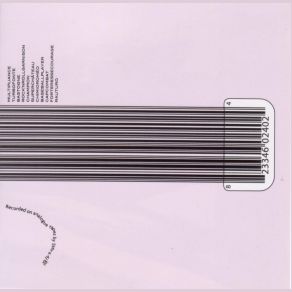Chateauvallon
Download links and information about Chateauvallon by Chevreuil. This album was released in 2004 and it belongs to Rock genres. It contains 11 tracks with total duration of 46:02 minutes.

|
|
|---|---|
| Artist: | Chevreuil |
| Release date: | 2004 |
| Genre: | Rock |
| Tracks: | 11 |
| Duration: | 46:02 |
| Buy it NOW at: | |
| Buy on iTunes $9.99 | |
| Buy on iTunes $6.99 | |
Tracks
[Edit]| No. | Title | Length |
|---|---|---|
| 1. | Multipliance | 0:57 |
| 2. | Turbofonte | 9:29 |
| 3. | Bastogne | 2:30 |
| 4. | Rock 'N Roll Garnison | 5:54 |
| 5. | Champion | 2:04 |
| 6. | Superchateau | 6:35 |
| 7. | Chimioromeo | 1:58 |
| 8. | Baseball Player | 1:30 |
| 9. | Capcombat | 3:15 |
| 10. | Fortresse Courage | 7:36 |
| 11. | Raturno | 4:14 |
Details
[Edit]Chateauvallon starts with a doomy synth instrumental backed by crashing drum rolls that seem to have been lifted from an entirely different record. It's an intriguing opening, but it doesn't set the scene properly for what's to come. The French duo consists of a guitarist and a drummer, the former playing his instrument through four independent mic and amp setups at the same time and the latter marrying the twin poles of '70s hard rock muso tendencies: he plays with the swaggering intensity of John Bonham (dig the first third of the epic "Turbofonte") as well as the jazzy complexity of King Crimson's Bill Bruford. The drummer, Julien F., is the showboating star of the album, alternating between tricky grooves and arrhythmic free jazz freakouts, but Tony C.'s layered guitar sounds are perhaps the most intriguing aspect of Chateauvallon. The multiple setups create an effect not unlike Steve Reich's early tape-phase pieces or Robert Fripp's Frippertronics: similar sounds placed slightly out of sync with each other begin to form overtones that create a peculiarly fascinating overall sound. This is most fully explored on the ghostly closer, "Rauturo," an exercise in ambience and room sound that incorporates the feedback and hum of the amp setups, as well as the sound of Tony C. physically manipulating the strings, as part of the overall piece. The album was produced by live sound enthusiast Steve Albini, and this is one of the best examples of his trademark naked, live-in-a-room sound.